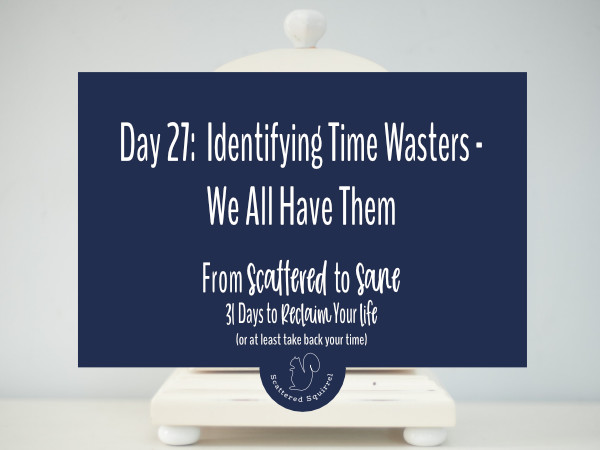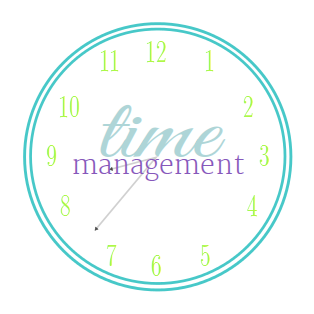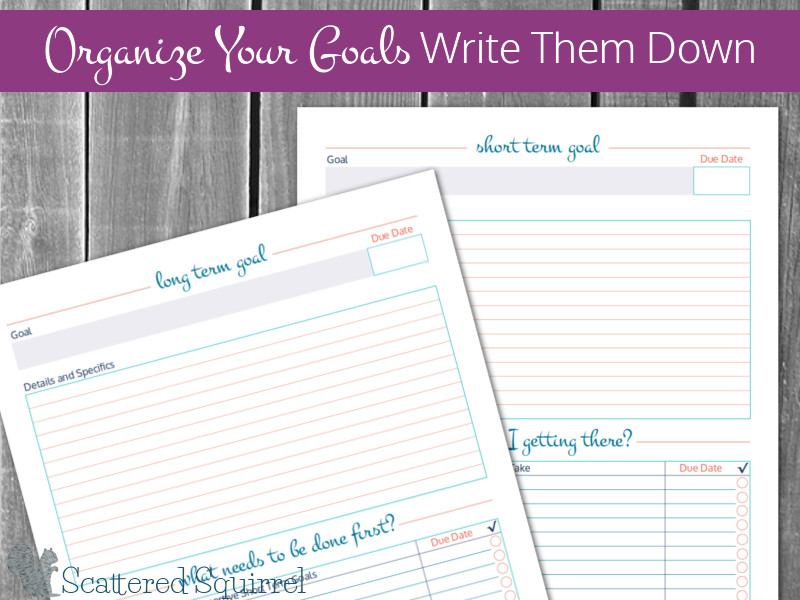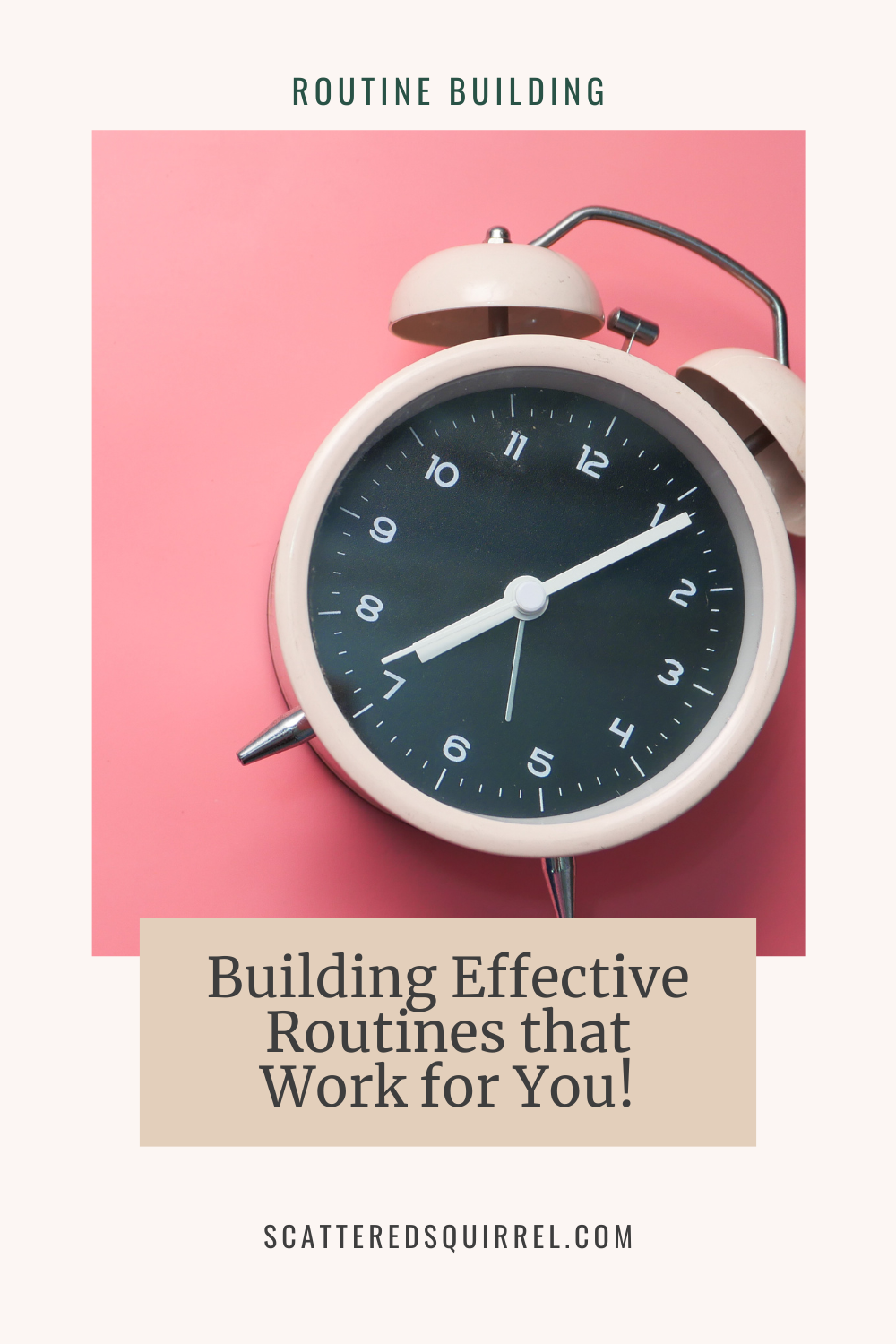Identifying Time Wasters – We All Have Them!
One evening I was waiting for the dryer to be done. There were just a few mintues left so I decided to sit down and scroll through Instagram. Half an hour later I surfaced from my scrolling only to realize I now had to scramble to get bed time routines started while folding the laundry.
It’s a familiar story right?
We all have these things I call time wasters. Today we’re going to spend some time identifying time wasters in our days and create a strategy for how to deal with them.
Identifying time wasters is a great way to be more mindful about how we’re spending out time.

We all have things in our
Other time wasters are harder to spot. They disguise themselves as helpful activities or necessary steps. For example, one of my biggest time wasters is research. It sounds like a good thing and in many cases it can be, but allow me to paint you a picutre of what it looks like as a time waster.
My master closet is in desperate need of organizing. Rather than starting the project, I spend some time looking up how to organize a closet. What tips and tricks do the pros suggest?
Since I’m organizing I should really give it a good cleaning too. So, I spend some time looking up how to clean a closet. What tools do I need? What cleaners should I use?
Even in the pre-Pinterest days I’d spend hours going through my books, magazines, and reading online articles. More time would go into researching how to do something than it would take to actually do it.
Why am I telling you this? Because it’s important to understand that not all time wasters are obvious. So how do you identify your own?
What Are Time Wasters?
I define a time waster as anything that takes away time from the things that need to be done. They pull our focus and are easy to lose track of time while doing them. And they’re different for everyone.
Over the years I’ve noticed that time wasters seem to fall into two broad categories. There are Obvious Time Wasters and Hidden Time Wasters.
Obvious Time Wasters
Obvious Time Wasters are the easiest ones to identify. Even if we’re not conciously thinking about them we know they’re there. Maybe you call them time sucks, because they are those things are supposed to be quick but we end up losing track of time doing.
As mentioned above, social media is a common, Obvious Time Waster, for many people. There is so much information to be found on social media that it’s easy to
Another common Obvious Time Waster is binge watching. Whether it’s a show on a streaming service, a series on your DVR, or YouTube videos, it can be easy to loose track of time while watching, especially when it is something that is really interesting or we’ve gotten really involved with the plot.
Identifying Obvious Time Wasters is easy, because they are those things we tend to do where we notice we’ve lost track of time. By paying a little extra attention to what we’re doing throughout the day, we can usually pick these out from the crowd.
Hidden Time Wasters
Hidden Time Wasters are a little harder to spot. They often disguise themselves as being helpful or necessary parts of the process. Sometimes they might be both but we allow those steps to take more time than they really need.
In my example above, where I talked about how I used to spend more time researching a project than actually doing it, the research really was a hidden time waster. If I had been looking up something specific, like how to solve a certain organizing problem in my closet then it would have been helpful, but spending all that time reading about how to organize a closet really wasn’t helpful.
These kinds of time wasters are harder to spot because of how they disguise themselves. Often they take being really present
As you go about your day or even your week, try being mindful of the things you’re doing that you didn’t plan to do or things that took longer to do than you thought. Did they honestly just take longer? Or did you spend unnecessary time on one step?
You have to be honest with yourself.
How to Identify Your Time Wasters
One of the easiest ways to identify your time wasters is to spend a week or two logging how you spend your time each day.
A time log is easy to do. Keep a notepad with you all day. As you move throughout your day note the start and end times of your tasks and what those tasks were. Be honest with yourself. If you spent 20 minutes on Instagram, write that down. The more honest you are the easier it be to see those time wasters.
To really make the time log effective, try being as descriptive as you can when logging activities. For example, if I was logging my closet cleaning from above, I need to log the hours I spend researching and then the time I spent planning, as well as the time it took me to actually organize the closet.
It might seem like a lot of extra work but spending the time to log your time will make identifying your time wasters so much easier.
What To Do Next
Once you’ve identified your time wasters you have two choices. Try to avoid them in the future or try to work with them.
Avoiding is the easiest option as it doesn’t really take much planning, just follow through. In my opinion, it’s also the least practical. I’ve found that often our time wasters are things we enjoy or they’re crucial steps that we spend too much time one.
Working with and around your time wasters takes a little more thought and planning, but the results will be more lasting.
Set Time Limits
For the Obvious Time Wasters, one of the easiest ways to work with them is to use a timer to help keep you accountable for your time. If you have a few spare minutes and you want to check your email or favourite social media account, set the timer. When it goes off move on to something else.
Time limits work really well for Hidden Time Wasters as well. Giving yourself a deadline to when you need to be done can be a great motivator to stay on task on not get side
Be Specific
This one is great for Hidden Time Wasters. When you make up your to-do list be specific in what needs to be done.
Using my closet example, if I was planning that same project today my list would include any problem areas I needed to address, such as how best to store scarves or what do with extra blankets. Those are the only things I might want to spend time researching to find a solution.
You can combine this step with the time limit step to create a to-do list that is productivity focused. Give yourself a time limit to do your research, plan your next step, or whatever it is that you need to do but are worried might take more time than you have to give it.
Give Yourself Breathing Room
Make time in your schedule for fun things. If social media is your jam, set aside time to spend on it. If you enjoy watching tv and know that you always watch at least two shows or episodes each night, make time for it.
Giving yourself the freedom to spend on your time wasters can be a really effective way to work with them. Especially when they are things you enjoy doing. After all, what’s the point in identifying time wasters if we can’t have some fun with them.
Challenge Check In
We’re nearing the end of this challenge. How are you doing with your three daily things? Are they starting to feel more natural and more second nature? Don’t worry if it doesn’t feel like it yet. These things take time.
Sometimes routines come together really quickly and other times they take conscious effort for longer. Just keep working on them and eventually you’ll be doing them without thinking about them.
Speaking of just three things, are you finding your weekly three things to be helpful for you?
Drop me a line in the comments below and let me know how things are going. Feel free to ask questions and chime in on each other’s comments. Let’s keep this conversation going.










Hi, I just love your printables, it seems that you offer a complete system. What do you suggest on how many sections a planner should have, since you offer lots of categories. any ideas?
thank you
Angela
Hi Angela, how many sections you need in your planner is a very personal choice. What I do, is I start with just my basic planning pages, monthly calendar and weekly or daily planner. Then I add sections as I need them based on what I’m using the planner for. For example, if you need to keep track of your finances or your meal plan in your planner, then you might want to make sections for those. I usually keep a few unlabeled dividers in my planners with some note paper. That way I can create new sections as the needs arise.